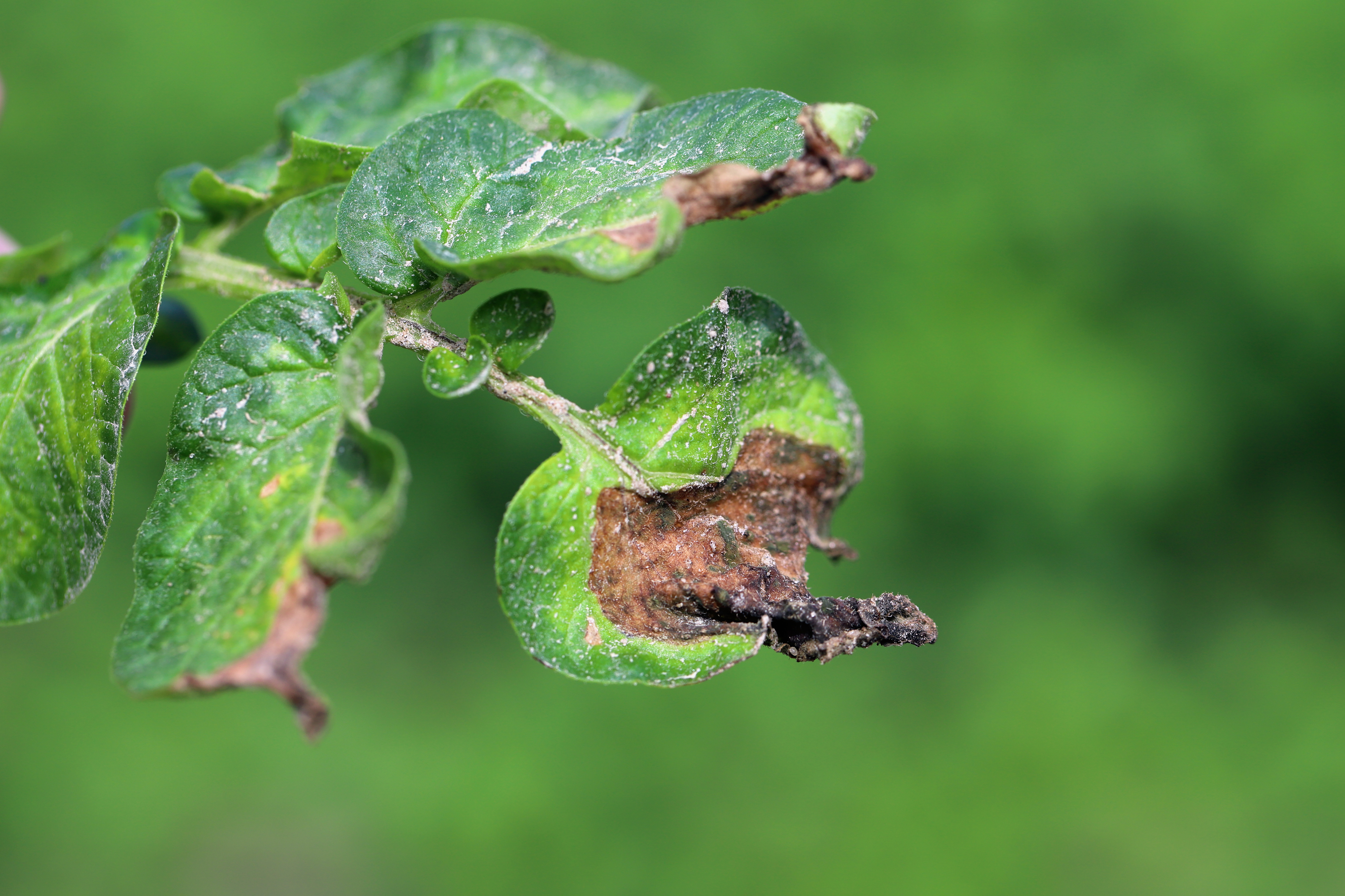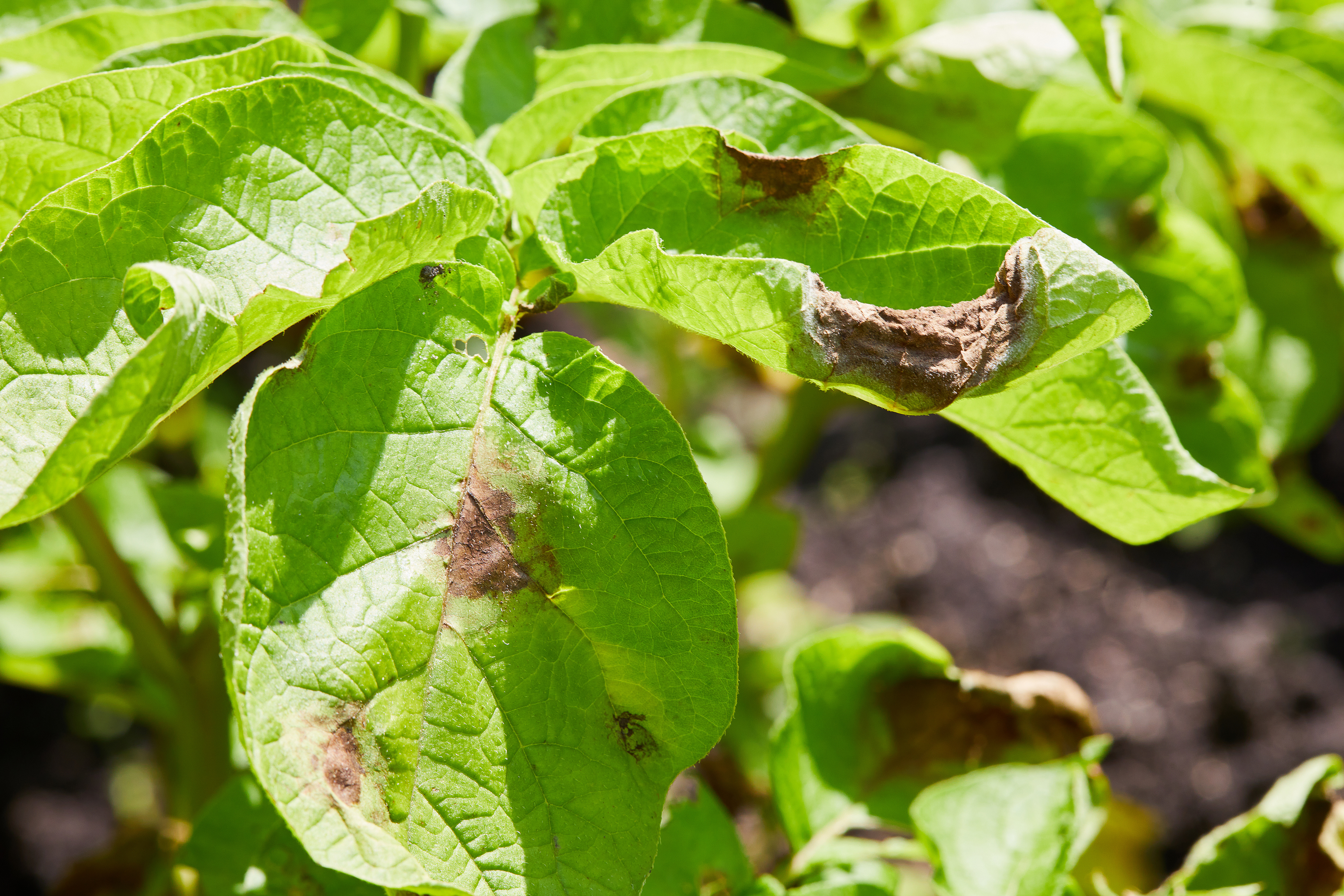Impact of early & late blight on potatoes
Early blight is caused by the fungus Alternaria solani. It is an endemic disease in which the inoculant is always present, meaning that the disease can redevelop and emerge each growing season.3 Early blight affects the leaves, stems, and tubers of potatoes, and if not managed properly, can reduce the yield, size, and storability of the tubers, damaging the overall quality and marketability of the entire crop.4
Late blight is caused by the fungus Phytophthora infestans, which is the most damaging pathogen affecting potatoes. It is a highly aggressive disease that, if left uncontrolled, especially in weather conditions that are conducive to development (warm and humid), can destroy potato fields in as little to five to seven days.5 Late blight can survive for long periods of time by living on infected cull and seed tubers, tubers left in the field after harvest, and even slivers from seed-cutting operators.5 Post-harvest losses can also occur if infected tubers are stockpiled.
Recognizing signs & symptoms
As the names suggest, early blight and late blight reference the approximate time each disease begins to appear, although the timing for both can overlap.6
Early blight, which usually affects older, lower leaves first, thrives in warm temperatures with high humidity. Initial symptoms appear in the form of small brown or black lesions surrounded by a narrow light-green or yellow halo.3 If left untreated, these lesions will begin to appear on stems and upper leaves. Infected tubers will have dark lesions which may appear circular or irregular in shape and will have a texture similar to cork.4
Late blight often appears in the form of wet, light-to-dark green spots on the plant leaves, typically at the tips or in the margins. If favourable conditions for disease development continue––high humidity; moderate temperatures during daytime and cooler in the evenings––over time, these lesions will darken, and a noticeable white fungus may appear on the underside of the leaves7. As the disease continues to spread, plant stems may begin to droop, and leaves may die off. The tissue of infected tubers will feature a reddish-brown discolouration under the skin.







